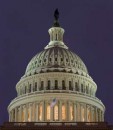Congressional Report Validates Concerns over Article V Convention Proposals
Congressional report validates JBS convention concerns
By Robert Brown
An April 2014 report from Congressional Research Service (CRS), whose analysis is described as “authoritative”, validates many concerns voiced by the John Birch Society regarding an Article V convention.
Supporters of a convention claim that an Article V convention is a way to “bypass Congress” in making amendments to the US Constitution. Further, they claim it would be “totally controlled by the states”. We are told the states would select delegates, establish rules and subject matter for a convention, and could even arrest and replace delegates who overstepped the rules.
Contrary to these claims, the CRS report points to the ’70s and ’80s, when there was interest in an Amendment convention. During that time, Congress introduced 41 bills, which “generally included quite specific standards for state petitions, delegate apportionment formulas and delegate qualifications….” (p.36)
In these bills, Congress addressed how many delegates and how many votes each state would have. Supporters of a convention claim that, “Of course, we know it would be one state, one vote.” Contrary to this, Congress proposed the convention should represent the populations of the states, not just the states themselves. CRS reveals “Apportionment of convention delegates among the states was generally set at the formula provided for the electoral college.” (p.37)
According to this formula, California would have 55 delegates and votes, while other states would have far fewer votes among a total of 535. For example, Montana, Wyoming, and North and South Dakota would each only have three votes. This should cause concern for anyone whose views are not supported by the more populated states.
Undermining the claim that states can control their delegates, and arrest them for exceeding the bounds set by the states, the report observed, “Most bills provided that … delegates received immunity from arrest in most instances during the convention.” (p. 37)
The report explores the arguments of whether a convention would have limited or unlimited power, and finally concludes, “the question ‘what sort of convention?’ is not likely to be resolved unless or until the 34-state threshold has been crossed, and a convention assembles.” (p.27) In other words, “We have to pass the bill so that you can find out what is in it”! But of course, by then it will be too late to stop it.
Remember, this report was written for Congress in 2014, to instruct them about their powers regarding an Article V convention. The over-arching message is quite clear. “Article V delegates important and exclusive authority over the amendment process to Congress.” (p.4) This exclusive authority applies to both methods of proposing amendments, those proposed by Congress and those proposed by an Article V Convention.
The history cited in the CRS report represents not only what Congress could do in the case that a convention is called, it represents what Congress has done in preparation for a convention. History is the most accurate predictor of the future.
Please see the entire report at the following link:
https://www.fas.org/sgp/crs/misc/R42589.pdf
Who is the Congressional Research Service?
From the website of Congressional Research Service (http://www.loc.gov/crsinfo/)
“The Congressional Research Service (CRS) works exclusively for the United States Congress, providing policy and legal analysis to committees and Members of both the House and Senate, regardless of party affiliation. As a legislative branch agency within the Library of Congress, CRS has been a valued and respected resource on Capitol Hill for nearly a century.
CRS is well-known for analysis that is authoritative, confidential, objective and nonpartisan. Its highest priority is to ensure that Congress has 24/7 access to the nation’s best thinking.”
 Alex Jones
Alex Jones Ludwig von Mises Institute
Ludwig von Mises Institute JBS Freedom Index
JBS Freedom Index